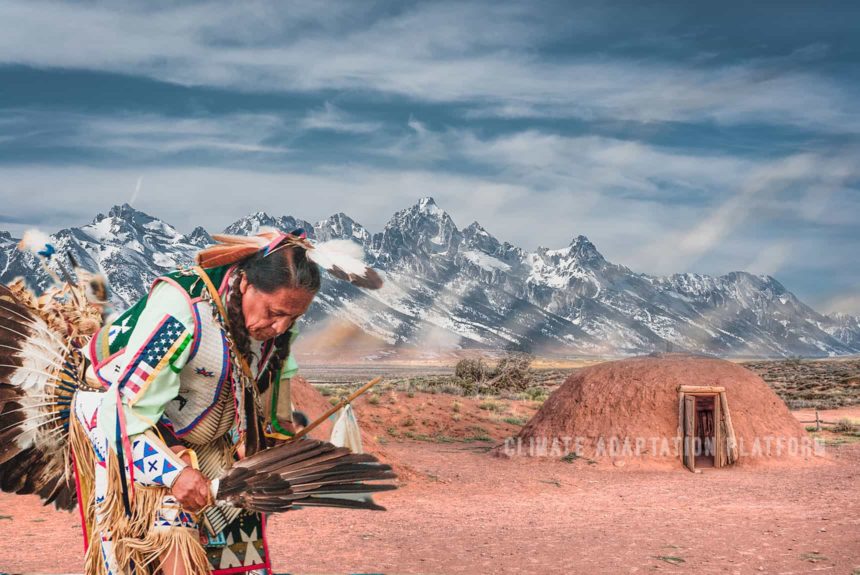Climate change threatens the Native American’s ability to live on the land due to higher temperatures, more prolonged droughts, and diminishing water supplies.
To help with their climate adaptation initiatives, the US Department of Agriculture funded the Native Waters on Arid Land projects in 2015.
The EOS’s article, “Indigenous Communities Outline Their Climate Data Priorities”, presents that “the goal of the project was to partner researchers with tribal communities in the Great Basin and American Southwest to understand how climate change was affecting the region collaboratively and to come up with possible paths to adaptation.”
Two surveys were conducted to identify the information and data to help the Indigenous communities with climate resilience efforts. Early in the project, Western researchers acknowledged the importance of looking to tribal communities to take the lead in collaboration (Palmer, 2021).
The article highlights the attitude and approach of research as they gather information and collaborate with the Indigenous communities to discover information that could help them build resilience from climate change.
Helen Fillmore, a researcher at the University of Nevada, Reno, and a member of the Washoe Tribe, says, “We wanted to investigate this topic as a survey to make sure that we weren’t importing our own bias into it.”
She added that “We want to develop a better understanding of their priorities so that we can work and engage with them in a more meaningful way.”
The survey respondents are composed of tribal government employees, agriculturalists, researchers, and outreach professionals engaged in climate adaptation and resiliency efforts on reservation lands—tribal members made up three-quarters of the 98 respondents.
Findings reveal that respondents give the highest priority ratings to the information related to climate adaptation on reservation lands and the role of traditional knowledge in climate adaptation.
“Being able to integrate Traditional Knowledge when it comes to climate change adaptation or natural resource management is very important when it comes to the resiliency of these communities,” Fillmore said.
When it comes to where the indigenous communities access climate-related information, the survey revealed that they prefer to get them from a local source – tribal resource departments, traditional knowledge holders, farmers, and ranchers. This finding shows the importance of placing resources at a local level and making them accessible to the tribes.
Lastly, the finding points to the significance of acknowledging tribal nations’ leadership in their climate adaptation strategies because they possess knowledge of those lands and afford them the dignity to lead in finding solutions to the challenges they are facing.
“Overall, researchers said, the survey revealed surprising results that underlie the value in asking, rather than assuming, what information or data might be helpful for Indigenous communities in adapting to climate change. “I think it’s shown that it’s always good to be humble and to ask questions first, before starting to pursue something that isn’t going to be needed or isn’t going to be relevant to the communities that you’re working with,” Fillmore said.
Source:
Palmer, J. (2021, December 13). Indigenous Communities Outline Their Climate Data Priorities. EOS. Retrieved from https://eos.org/articles/indigenous-communities-outline-their-climate-data-priorities



Leave a Reply